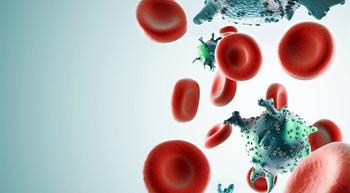
Developing Diabetes, High Blood Pressure or Heart Disease After Breast Cancer May Increase Risk for Death
A diagnosis of diabetes, high blood pressure or cardiovascular disease within two years of being diagnosed with breast cancer impacted a woman’s risk for death related to breast cancer or cardiovascular disease.
Women with existing comorbidities who developed a new comorbidity within two years of being diagnosed with breast cancer may have an increased risk for overall and cardiovascular disease mortality compared with those without concurrent diseases, according to a study published in Cancer.
“The close monitoring of patients with (breast cancer) from the time of diagnosis followed by targeted interventions could improve survival outcomes,” the study authors wrote.
Data from the U.S. previously indicated that anywhere between 32% and 42% of women with breast cancer have comorbidities, or the presence of two or more diseases at the same time, at the time of their cancer diagnosis, the study authors wrote in the introduction of the study. Some of the most common comorbidities in women with breast cancer include high blood pressure, cardiovascular disease and type 2 diabetes. Compared with non-Hispanic White breast cancer survivors, Black breast cancer survivors are disproportionately affected by comorbidities, which can also affect breast cancer survival disparities.
Researchers aimed to assess the link between coexisting and newly diagnosis diabetes, cardiovascular disease and hypertension and the risk of death from cardiovascular disease in women with breast cancer. This study particularly focused on 33,099 women (mean age at diagnosis, 61 years; 9.3% Black) with incident invasive breast cancer who had available inpatient and outpatient discharge data without two years of receiving a breast cancer diagnosis. All patients lived in Missouri, which was a specific decision on the researchers’ part.
“Missouri is one of many states in the United States burdened by high rates of mortality from female (breast cancer) as well as type 2 diabetes, (cardiovascular disease) and hypertension,” the study authors wrote. “The prevalence of these comorbidities is even greater among (African American) women in Missouri.”
The most commonly reported comorbidity diagnosed within the first two years after a breast cancer diagnosis was hypertension (9%), cardiovascular disease (4%) and type 2 diabetes (2%).
After a median follow-up of 61 months, deaths occurred in 7,620 women, of which 1,803 were related to cardiovascular disease and 3,891 were linked with breast cancer. Women with newly diagnosed cardiovascular disease had a higher risk for dying from cardiovascular disease than those without it. This was also seen in patients with diabetes and high blood pressure. These associations were similar when assessed by race.
“Although we did not observe significant differences by race, Black/ (African American) women in our study had a significantly higher prevalence of these comorbidities and were more likely to have received chemotherapy,” the study authors wrote. “Black/ (African American) women also had a higher risk of death from (breast cancer) compared with White women over the same follow-up period.”
The strongest link was seen in women treated with chemotherapy who then developed cardiovascular disease
Some strengths of this study include a diverse population of women including Black women and the use of high-quality cancer registry data. Despite these strengths, a limitation of this study was that it lacked behavioral risk factor data that may affect morality outcomes from breast cancer and cardiovascular disease. This could include dietary factors, body size/obesity and physical activity.
For more news on cancer updates, research and education, don’t forget to




